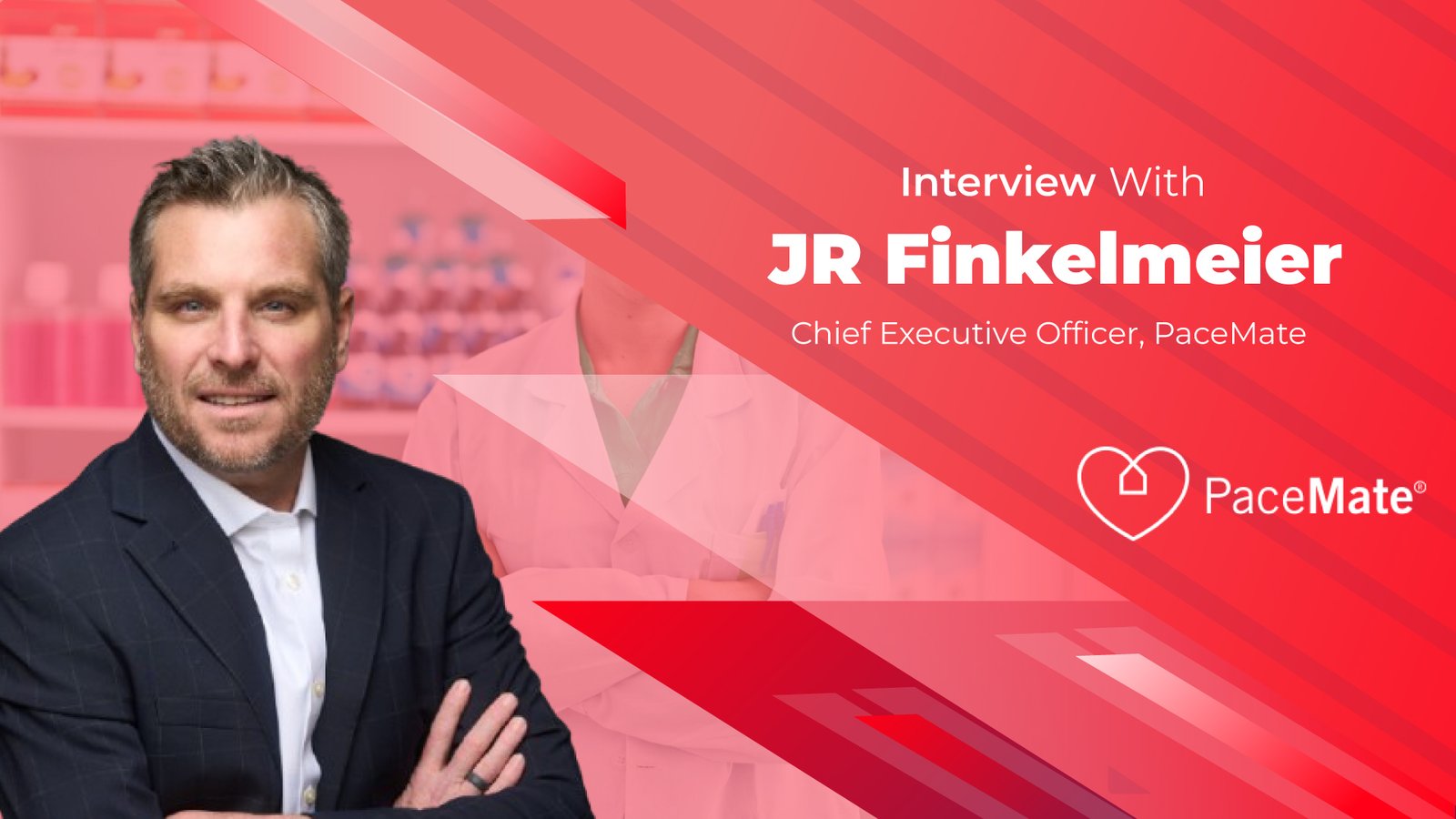How next-gen platforms are redefining remote cardiac care through workflow precision, cloud scalability, and clinician-centered AI.
JR, your journey from leading Philips’ ambulatory monitoring division to now heading PaceMate is impressive—what drew you to this particular opportunity, and how has that transition shaped your leadership vision?
I became familiar with PaceMate while at Philips because we shared customers who wanted to unify workflows across both implantable and ambulatory cardiac data. The PaceMate platform stood out for how elegantly it solved for this by streamlining data aggregation and improving efficiency for healthcare providers.
In a healthcare environment plagued by staff shortages, solutions that optimize workflows and let clinicians practice at the top of their license are essential. What drew me in was that PaceMate had already figured this out by removing non-value-added clicks, curating data, and enabling providers to focus on patient care.
Equally impressive to me was how PaceMate tackled what I call the “last mile delivery” problem, or getting meaningful, automated results directly into the electronic medical records (EMR), complete with billing charges and encounter documentation. And it’s all backed by a tech-enabled service model that combines our software with credentialed cardiac technicians (IBHRE-certified) who curate and elevate clinically relevant data.
At Philips, I was proud of our work driving end-to-end patient care. At PaceMate, we are taking it a step further with workflow optimization and capturing high-integrity, discrete data for clinical care and research. It’s an incredibly agile organization where our customers are true partners in innovation. This speed, intimacy, and customer-defined development will continue to shape my leadership approach moving forward.
With your deep background in medtech, how are you applying your past experience to reposition PaceMate for its next stage of growth?
I’ve found success in building scalable systems that capture data from biosensors—both diagnostic and therapeutic—and curating it intelligently using a blend of automation and human expertise to deliver clinically actionable insights to providers. That’s the model we’re executing on at PaceMate.
What’s unique at PaceMate is our ability to do this with both implantable and ambulatory cardiac data. And while cardiac is our core strength, the platform we’re building is workflow-first, device-agnostic, disease-agnostic, and vendor-neutral. That means we can scale to other cardiac modalities—like wearables or consumer ECGs—and eventually even beyond cardiology.
What really excites me is the data we’re capturing across device telemetry, EMR context, and curated insights from our clinical experts. That trifecta creates a robust longitudinal data asset that positions us for the future—both clinically and commercially.
What distinguishes PaceMate in the remote cardiac monitoring space, especially when it comes to balancing automation with clinical precision?
We’re grounded in clinical rigor and don’t take shortcuts while also being unapologetically innovative. In remote monitoring, standing still is not an option and what defines us is our ability to be both precise and forward-looking.
Of course, I’m realistic. Over time, software platforms will commoditize, and feature upgrades will become incremental. What will continue to set PaceMate apart is our people and the quality of service we deliver. That’s what customers remember and it’s our most enduring differentiator.
Responsible automation plays a pivotal role in our strategy as we look to empower clinicians rather than replace them. Our technicians are the best in the industry, and we use automation to eliminate tedious, error-prone tasks so they can focus on what matters most: delivering high-quality clinical insights, fast. In the end, data without context is just noise.
Cloud migration is accelerating in healthcare. What are the most impactful advantages you’re seeing for health systems that move their legacy monitoring infrastructures to the cloud?
The shift to the cloud is transforming cardiac monitoring and the health systems that embrace it gain:
- Anywhere, anytime access for clinicians and device teams—enabling care continuity across locations and providers.
- Improved data security with modern cloud-native encryption and compliance frameworks.
- Real-time data availability and sharing, which is critical for timely intervention.
- Scalability as cloud-native architectures support growth without costly infrastructure upgrades.
- Enhanced analytics, with the ability to run machine learning and AI models side-by-side with clinical data.
For most healthcare organizations, upgrading to the cloud is a clinical and operational enabler.
After acquiring Medtronic’s PaceArt Optima™ system, how are you approaching customer continuity and integration to ensure a seamless experience?
We’ve leaned in heavily on the PaceArt community since the acquisition and we’ve never wavered in our support for them. In fact, we’ve honored every commitment made to Medtronic and its customers—validating why Medtronic chose PaceMate in the first place due to our unwavering commitment to the customer experience.
One of our core focuses is investing in the strengths of the PaceArt platform. We’ve brought over the entire PaceArt support team, so the same people answering customer calls before are still doing so today. More than that, we’ve replicated key PaceArt features inside PaceMateLIVE, so customers have access to familiar tools alongside a next-generation, cloud-native platform.
We also launched two exclusive capabilities: full migration of historical patient data from PaceArt servers into PaceMateLIVE, and seamless wireless integration with Medtronic’s in-clinic SessionSync™ tool. This ensures complete continuity for both patient care and research.
As PaceMate gears up for wider expansion, what operational priorities are you focusing on to support scaling effectively and responsibly?
Scaling from dozens of customers to hundreds—or thousands—requires a different operating model. Relationships and hard work lay the groundwork but scalable growth demands repeatable processes, quality control, and organizational discipline.
That’s why operational excellence is one of our strategic priorities. We’re building scalable revenue by standardizing workflows, accelerating customer onboarding, and strengthening our key performance indicators. I’ve done this before at BioTelemetry, where we scaled to over 2 million patients with those principles.
We’re also bringing in top talent to lead this charge. I recently hired Bryan Merryman—who ran healthcare operations for me at Philips—to drive professionalization, process optimization, capacity planning, and people development at scale.
We deeply understand the fact that healthcare is built on trust, outcomes, and execution—and we’re investing in all three.
Clinician feedback has clearly played a pivotal role in shaping your product strategy. How do you operationalize that input into actionable innovation?
It starts with attentive listening. PaceMate has thousands of users on the platform every day, who are constantly providing feedback. We treat it like a crowdsourcing engine, which is what any modern SaaS company should do.
Then, based on this feedback, we are prioritizing the innovations that will benefit 80% of customers, rather than just a handful. This balance between utility and individual need is what keeps us nimble and scalable.
We’ve also recently formalized a product launch process that ensures consistent delivery, training, and adoption. This allows us to operate on a rapid release cadence—shipping meaningful features every five weeks. The result is real-time innovation, driven by our users, with discipline in execution.
With AI evolving rapidly, how do you envision it continuing to enhance PaceMate’s clinical decision-making and workflow management?
AI is central to our future and we recently brought on Sean Shoffstall to lead AI, innovation, and data strategy. Sean has more than 25 years of experience in healthcare software, including co-founding Sycle (the first cloud-based EMR for audiology), launching the world’s first AI-analyzed audiogram, and driving multiple AI-focused ventures.
At PaceMate, Sean is focused on two tracks:
- Short-term: Optimizing our internal workflows and user experience through explainable AI that augments—never replaces—clinical expertise.
- Long-term: Building out our predictive analytics and machine learning strategy, unlocking research, triage support, and population-level insights from our dataset.
In all of our AI innovations we are prioritizing responsibly, transparently, and developing the capabilities in partnership with clinicians.
You’re managing both M&A transitions and rapid product development. How do you strike a balance between short-term execution and long-term strategy?
This is something I’m deeply passionate about. Startups often live in pure execution mode, and we’ve done that well at PaceMate. But building a sustainable business means knowing when to pivot from ‘go fast’ to ‘scale smart.’
I use a 75/25 framework: 75% of our focus is on performance in the next 12 months, while 25% is on transformation—planning for the 3–5 year horizon. That blend ensures we don’t lose sight of long-term innovation while still hitting our near-term goals.
Healthcare will continue to evolve but the core challenge of moving data efficiently, safely, and intelligently will remain. We’re keeping this top of mind as we build for both the now and the next.
Finally, what’s your perspective on where remote cardiac care is headed—and how is PaceMate positioning itself to lead in that future landscape?
The future of cardiac care will center around data and trust. We have one of the richest cardiac datasets available which positions us well to power AI, improve triage, enable population health, and even fuel preventive strategies.
As this shift happens, we are committed to never losing sight of the clinician. Rather than replacing clinical judgement we are looking for ways to enhance it in a way that builds trust.

JR Finkelmeier
Chief Executive Officer, PaceMate
JR Finkelmeier is the CEO of PaceMate, the cardiac remote monitoring platform that leading healthcare providers trust.

